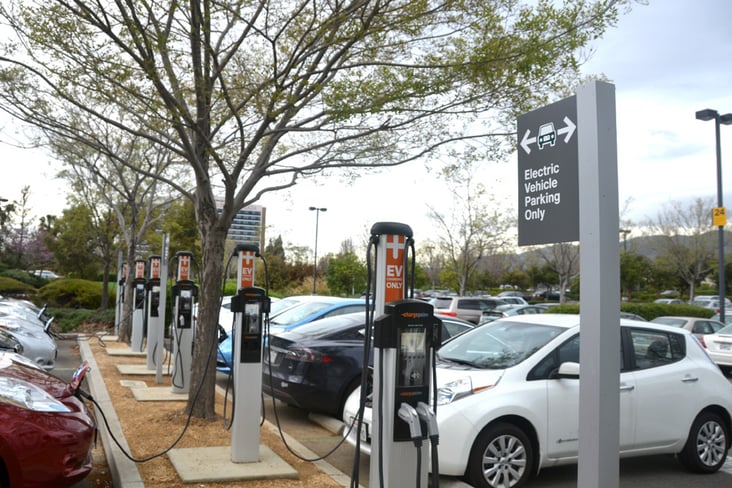This post is one in a series featuring the complete slate of advanced energy technologies outlined in the report This Is Advanced Energy.

Electric vehicle charging infrastructure has developed quickly over the past few years as the number of plug-in electric vehicles (PEV) on the road has risen significantly. Most EV charging infrastructure uses “Level 1” charging (standard outlet voltage, which requires no additional equipment) or “Level 2” stations (charging at higher voltage, which is faster but requires special equipment). In addition, there are a small number of “Level 3” direct current (DC) fast-charging stations, such as Tesla’s “Supercharger” stations, which can charge vehicles in a matter of minutes. Most PEV owners have charging equipment at home, but public charging infrastructure is becoming more prevalent.
As of late 2015, there were 27,474 public EV charging outlets in the United States. In 2014, the market size of electric vehicle charging infrastructure in the United States was $200 million, representing a 31% increase over 2013. Market growth in EV infrastructure in the United States has outpaced the global market, with total market share increasing from 21% in 2011 to almost 34% in 2014. Charging stations can be located anywhere from public streets to retail stores to private homes. Recognizing the growing demand for charging infrastructure, Brookfield Office Properties installed 40 ChargePoint charging stations in multiple locations throughout Wash- ington, California, Colorado, and Texas.
As PEVs grow in number, utilities and grid operators will need new tools to manage the incremental demand from vehicle charging. EV charging infrastructure can be integrated with intelligent controls to provide “smart charging” capabilities. In its simplest form, this involves controlling when vehicles charge their batteries, either to reduce load during peak times or to add consumption during times of high renewable energy generation. In the future, the batteries in PEVs can be used as energy storage to optimize grid operations. So-called “vehicle-to-grid” (V2G) technology is currently being demonstrated by several research projects, including a collaboration between the National Renewable Energy Laboratory and Xcel Energy. The Department of Defense has also started to deploy V2G technology through a pilot project in Los Angeles, with preliminary testing indicating that revenue from electricity regulation services provided to the grid can exceed energy consumption costs under certain conditions. With smart charging, analyses have shown that PEVs can reduce their electricity use by up to 95% during demand response events without impacting mobility, indicating that there can be significant deployment of PEVs with minimal need for new generating capacity or grid upgrades. Smart charging with DR capabilities is being deployed through a pilot program by ClipperCreek and Itron in conjunction with the electric utility Pepco Holdings, Inc., in Maryland and Washington, D.C.
Download the full report at the link below.
